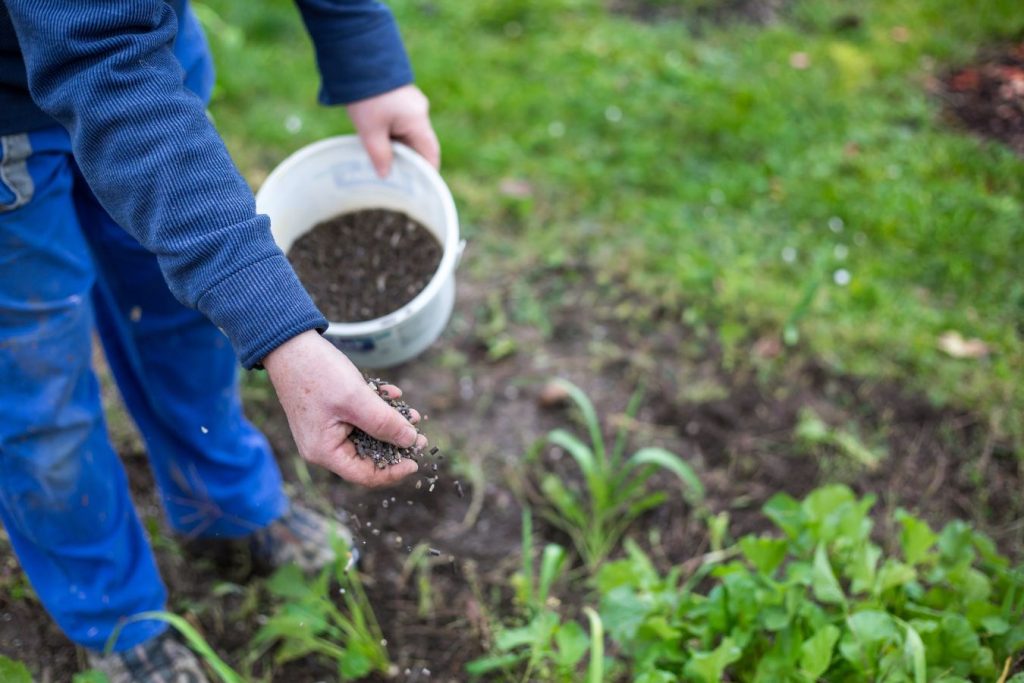Coffee fertilizer is split into numerous batches: The coffee plant passes through several different growth stages in a year, and each step has varied nutritional requirements.
As a result, fertilization that is spread out over the year in numerous batches should be allocated, computed reasonably, and used as a critical component in deciding the harvest yield each year.
Coffee fertilizer
Coffee is a multi-year plant that develops throughout the year in a variety of stages. The Tay Nguyen Highlands area has two separate sunny and rainy seasons, meaning the plant has various nutritional requirements depending on its location.
If the plant receives enough moisture throughout the dry season, it will grow nearly as much as during the wet season. In reality, water availability during the dry season only helps plants survive or thrive minimally; during the rainy season, sky water should be used to promote more robust growth.
When water is available during the dry season, the tree’s capacity to use nutrients is shallow. And the goal of flowering and fruiting is just survival.
If the water supply is scarce this season, experts advise against fertilizing; yet, often, watering plants is highly expensive. Fertilizing now without enough water will be harmful to the plant. Because the fertilizer itself also uses water for metabolism, exacerbating the plant’s “drought.”
Fertilizing coffee trees three times
For coffee trees, fertilization is often divided into three separate phases throughout the year.
- After the initial rains of the season, the first wave of the wet season, which comes in April and May, is substantial enough for the soil to be sufficiently humid. When the rainy season begins, applying a small amount of fertilizer is advisable.
The immature plants are unable to effectively utilize many nutrients. Since there is still a lack of water, low humidity, and enough water supply. Many plants are underutilized as a result, which can be upsetting.
- June-July-August, the middle of the rainy season. This fertilization is the most intense since the plant has grown enormously, has a developing set of leaves and root systems, and can absorb many nutrients to stockpile and be ready for the following growth stage. This time, family members split into two groups and spaced them apart by 2-4 weeks to assist the tree’s absorption coefficient reaches its highest level.
- September – October – November, the end of the rainy season, family members shouldn’t apply too frequently because the plant is getting ready to enter the holiday season and prepare for a dry season without water, which means it doesn’t absorb a lot of faeces
Fertilize coffee plants during the wet season
Director of the Vietnam Coffee Research Institute, Prof. TS. Phan Quoc Cuong, suggested dividing the fertilizations into the following categories based on research findings and personal experience:
The quantity of excrement is distributed among relatives to become ready for fertilization during the rainy season.
- N fertilizer: Apply 35 percent to the first phase. 40 percent to the second batch. And 25 per cent to the third phase.
- Fertilizer P: Fertilize for the first phase at a rate of roughly 0%. The second at 40%. And the third at 60%.
- Manure K: Fertilize for the first batch at roughly 30%. 40% in the second phase. And 30% in the third phase.
(Each batch is split into 2 – 3 portions spaced 1 – 2 weeks apart to provide the plant with the best chance of absorption.)
The third batch of fertilization uses less nitrogen (N) and more phosphorus (P). Because it is not yet time for the plant to thrive. But instead, to get ready to enter the stage of drought tolerance and produce superior flower sprouts.
In addition to promoting improved flower germ breakdown, the current abundance of P feces also supports strong roots prepared to withstand an impending dry season.
In order to more or less help family members less and enhance the effectiveness and quality of coffee garden management, we made an effort to include the opinions of many professionals. I hope your granny will use it.
According to Helena Coffee

